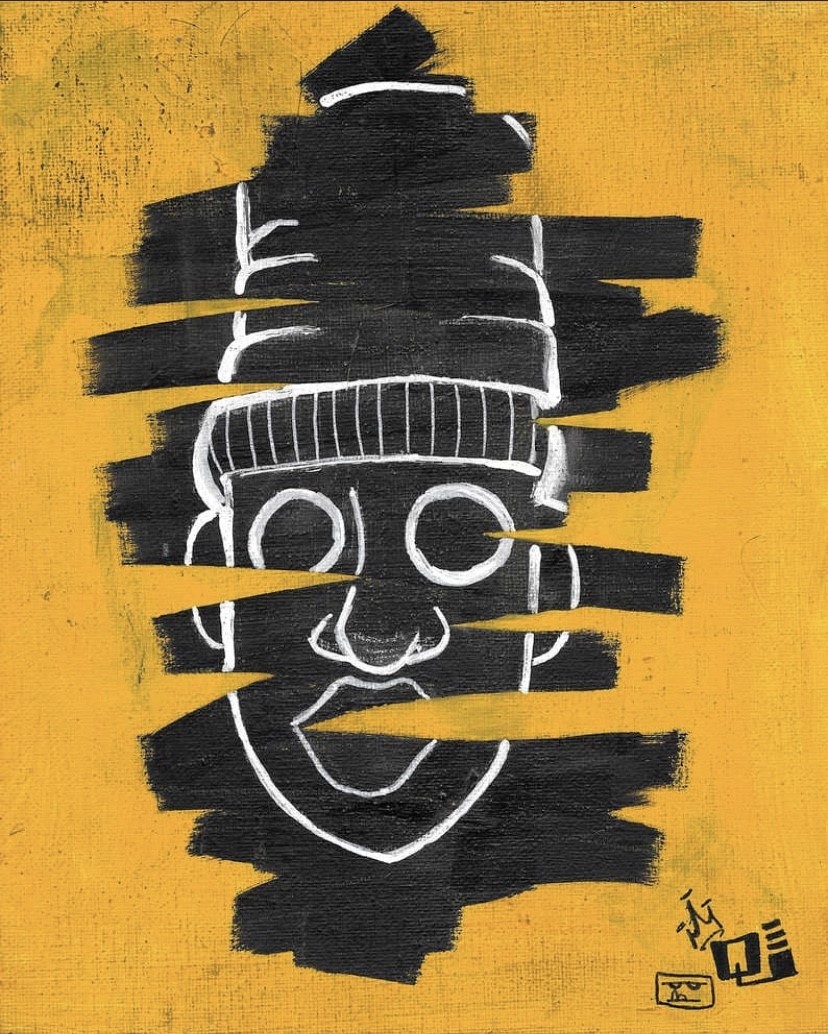The Art of Losing Someone
Following the deaths of two Detroit artists last year, WDET’s Ryan Patrick Hooper explores how the local creative community grieves — and creates new artwork to fill the void of loss.


How do artists remember their dead?
For the friends of Stretch Adam, it was about following in the traditions of his adopted home.
And it looked like something you’d expect to see in New Orleans, but I was actually walking in a funeral parade here in Detroit in the city’s New Center neighborhood on a Sunday afternoon last October.
Lead by members of the Detroit Party Marching Band, about 60 mourners blocked traffic as they walked across Woodward Avenue.
They marched to remember their friend Adam Shellabarger — better known to friends as Stretch — who passed away at the age of 35 last September.
“With loss, you have to take things and create things out of it. Otherwise, you’ll go mad.” – Jessica Care Moore, poet
A resident of the storied alternative arts venue the Crow Manor on the city’s west side, Stretch was an integral part of Detroit’s underground arts and culture scene that celebrates activism through independent art, performances and house shows. As a local comedian, he founded and hosted the regular stand-up night “Mothra” hosted at PJ’s Lager House in Corktown that quickly became a proving ground for young comics.
Stretch had been living in the Big Easy with his fiancé when he died, but his family and friends held a memorial in Detroit at the Tangent Gallery.
Click the player to hear Ryan Patrick Hooper’s feature on grieving artists and Jessica Care Moore’s performance of “Where Are The People?”

It felt more like a festival than a memorial.
There were hundreds of people — from Stretch’s brothers and parents to acquaintances he had made from all walks of life.
The food and beer were flowing. A non-stop soundtrack of live performances rang through the venue, ranging from stand-up comedy to local musicians performing tributes to Stretch with mourners singing along at the top of their lungs.
Signs of Stretch’s creative life were scattered all over the memorial — all dotted with the punk, DIY-aesthetic that permeated throughout his work.
A friend had reprinted a zine Stretch had made when he was a teenager. Homemade buttons featuring his designs were available for people to grab and take home.
And out of his loss, new art was made — including a cassette tape filled with voicemails from Stretch and his own music.
The outpouring of love and creativity made me think about how the loss of an artist can create new artwork to fill the void left behind.
Call it the art of losing someone.

Keeping the Cass Corridor Spirit Alive
Detroit poet Jessica Care Moore has confronted death in her work before.
“I lost my father in 1994 and I’ve been writing about that ever since,” says Moore. “Sometimes when I feel like I’ve lost Detroit, I write a poem for Detroit to keep it back alive. With loss, you have to take things and create things out of it. Otherwise, you’ll go mad.”

Shortly after the death of Stretch Adams, Moore’s friend and fellow artist Kwame Beard died in a motorcycle accident. He was 38-years-old.
Beard was talented with all things tech and had designed posters and flyers for Moore’s annual “Black Women Rock” event.
He lived in an apartment in the Cass Corridor overlooking Second Avenue.
Everybody in the neighborhood knew him simply as “Q.”
“I saw him all the time on his motorcycle,” says Moore. “He was beautiful. His smile could melt you. He was just this quirky spirit. He was special to everybody. He was loved.”
At an event honoring the 2019 Knight Arts Challenge Detroit winners — a series of grants designed to benefit local artists — Moore was invited to perform a poem.
With the ceremony happening just a few blocks from Q’s apartment less than a week after his death, Moore decided to perform her poem “Where Are The People?” and dedicate it to her friend.
“We were right there in the middle of Cass Corridor,” says Moore. “This is where I lift my brother up.”
“Q represents a metaphor for what Detroit is and what we need to hold on to. We cannot let those kind of energies.” – Jessica Care Moore, poet

Moore says she found parallels between Q’s death and the changes happening in the neighborhood he lived in. Once known as the Cass Corridor, Moore lamented its rebranding to Midtown and wondered how losing Q’s creative spirit would further change the neighborhood fabric.
“That wasn’t an easy-to-swallow poem for everybody,” says Moore. “That poem is really calling out this newness and saying where are the people who built this city? People like my daddy, who built it as a construction worker and put cement on the ground.”

Moore performed with the poem “Where Are The People?” at the WDET studios with guitarist Trey Simon. She dedicated it once again to Kwame “Q” Beard, who Moore has dubbed “the King of Cass Corridor.”
“It doesn’t even seem real that somebody like that can be gone, but that’s what I’m saying — Q represents a metaphor for what Detroit is and what we need to hold on to,” says Moore. “We cannot let those kind of energies be swept under the rug and let them pass away and not call his name and talk about him because that’s what makes Detroit great — that we have people like Q.”
Support the news you love.
Here at WDET, we strive to make our journalism accessible to everyone. As a non-profit public media institution, we maintain our journalistic integrity through independent support from readers like you. Because you value WDET as your source of news, music, and conversation, please make a gift of support today. Even $5 helps!
